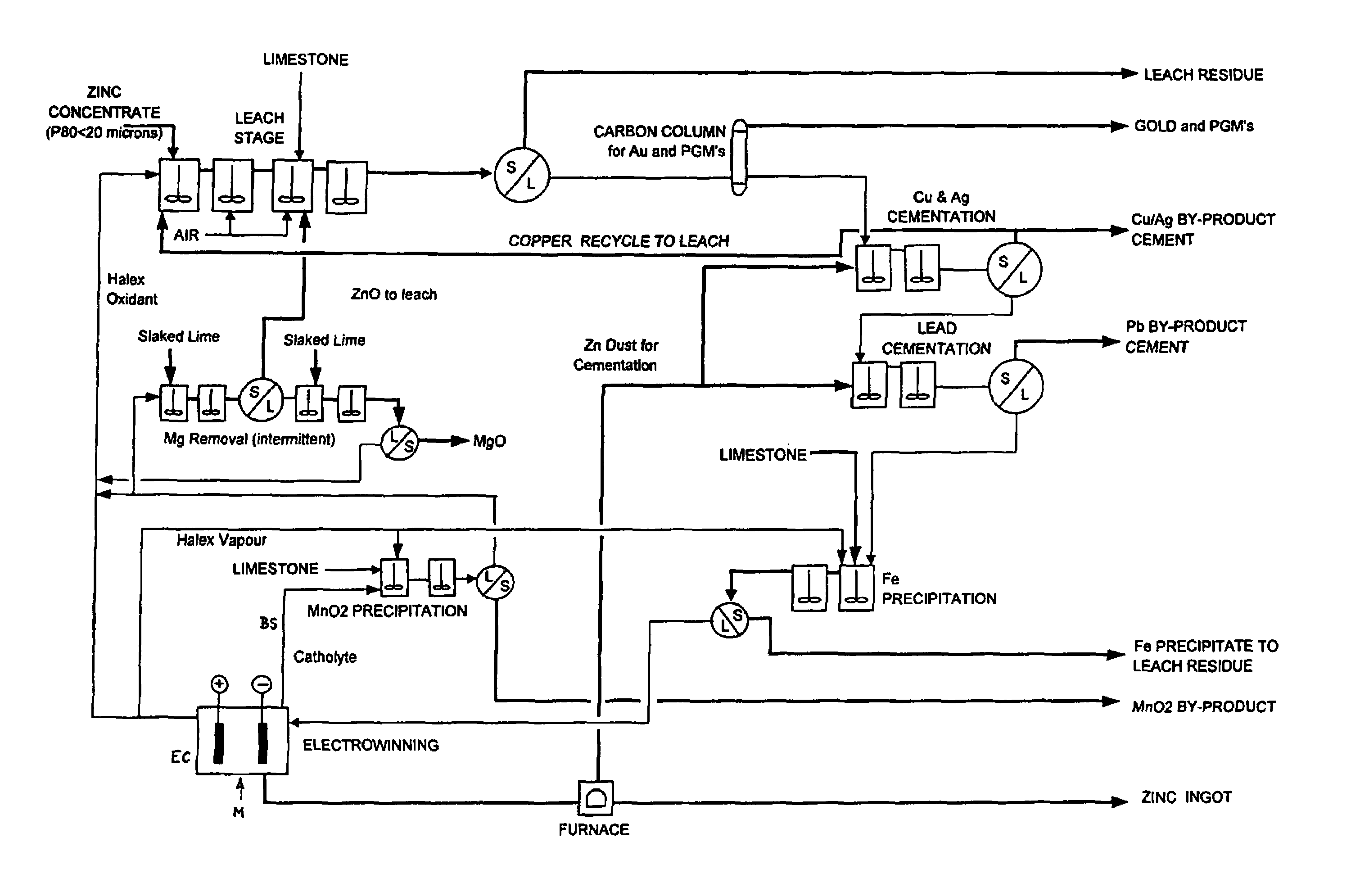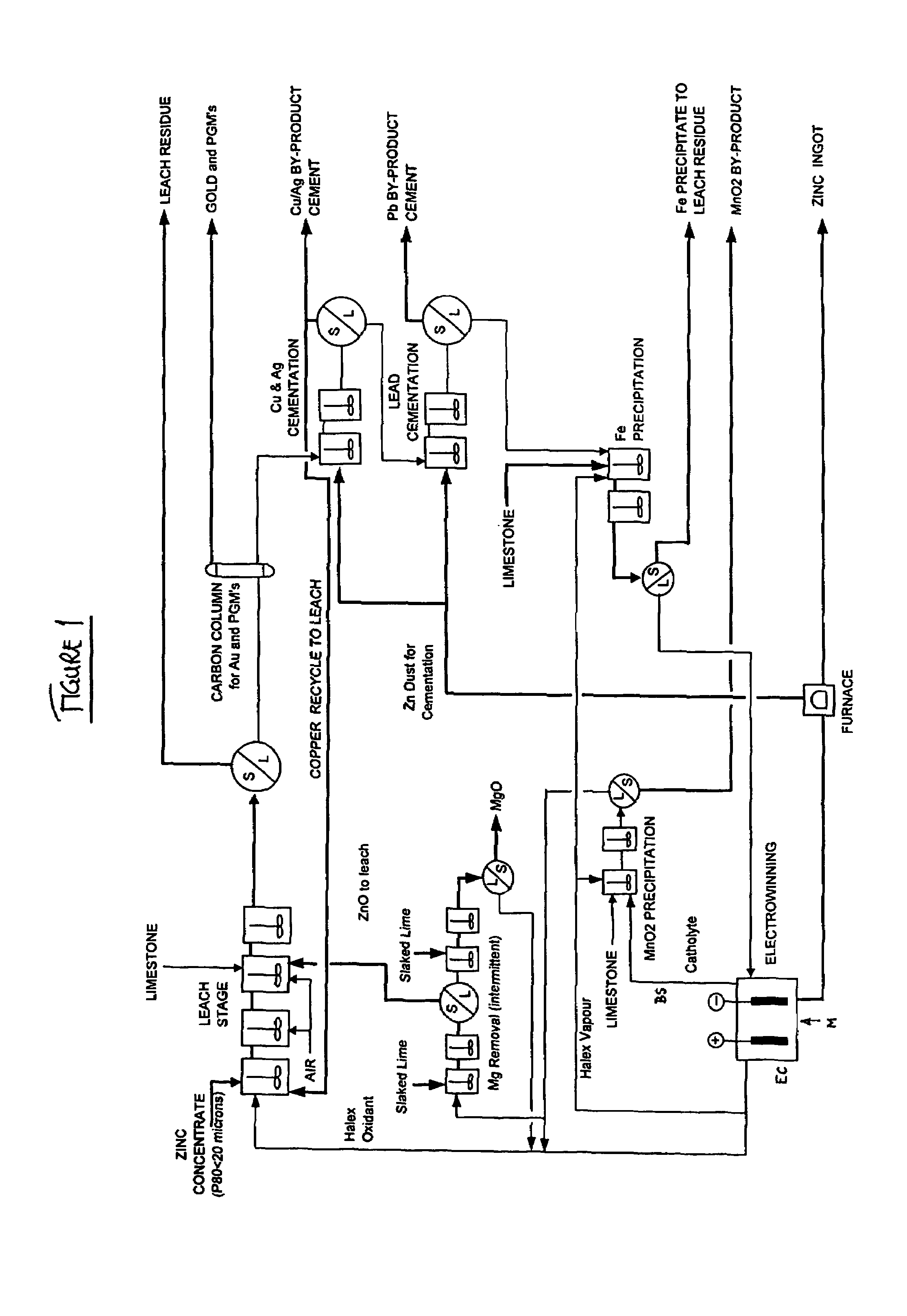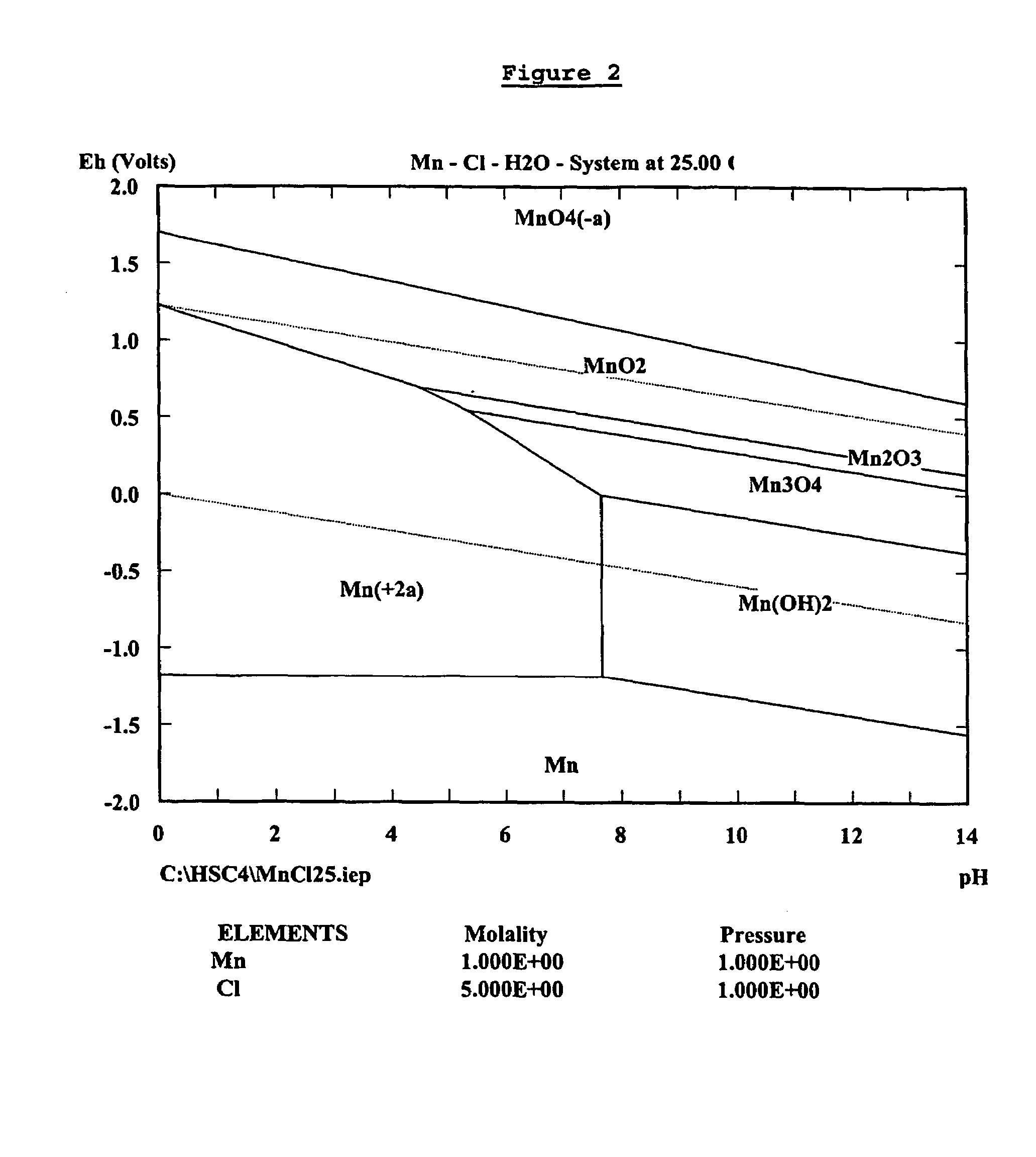Zinc recovery process
a zinc recovery and zinc technology, applied in the direction of dissolving, inorganic chemistry, zinc compounds, etc., can solve the problems of affecting the electrolysis and purity of zinc produced, affecting the cost of process, and silver and mercury are not so readily removed, so as to reduce the eh electrolyte, facilitate in-line implementation, and facilitate commercialisation
- Summary
- Abstract
- Description
- Claims
- Application Information
AI Technical Summary
Benefits of technology
Problems solved by technology
Method used
Image
Examples
example 1
[0106]An electrolyte comprising 200 gpl NaCl, 150 gpl NaBr, 30 gpl Ca2+, 25 gpl Zn2+ and 5 gpl Mn2+ was prepared as a typical bleed stream from a lead / zinc recovery process. 25 gpl CaCO3 was added to the electrolyte in a reaction vessel at the commencement of the removal process. Ca(OCl)2 was added directly to the electrolyte to oxidise the solution. The temperature of the solution was maintained at a typical process electrolyte temperature of 60° C. to 65° C. The results are shown in Table 1 below.
example 2
[0107]An electrolyte comprising 50 gpl NaCl, 110 gpl NaBr, 50 gpl CaCl2, 50 gpl Zn2+ and 15 gpl Mn2+ was prepared as a typical bleed stream from a lead / zinc recovery process. 85 gpl CaCO3 was added to the electrolyte in a reaction vessel at the commencement of the removal process. Halex vapours were generated externally and pumped into the reaction vessel. The temperature of the solution was maintained at a typical process electrolyte temperature of 60° C. to 65° C. The results are shown in Table 2 below.
example 3
[0108]An electrolyte comprising 50 gpl NaCl, 110 gpl NaBr, 50 gpl CaCl2, 50 gpl Zn2+ and 15 gpl Mn2+ was prepared as a typical bleed stream from a lead / zinc recovery process. CaCO3 was added to the electrolyte in a reaction vessel in small doses throughout the removal process. Halex vapours were generated externally and pumped into the reaction vessel. The temperature of the solution was maintained at a typical process electrolyte temperature of 60° C. to 65° C. The results are shown in Table 3 below.
PUM
| Property | Measurement | Unit |
|---|---|---|
| concentration | aaaaa | aaaaa |
| concentration | aaaaa | aaaaa |
| pH | aaaaa | aaaaa |
Abstract
Description
Claims
Application Information
 Login to View More
Login to View More - R&D
- Intellectual Property
- Life Sciences
- Materials
- Tech Scout
- Unparalleled Data Quality
- Higher Quality Content
- 60% Fewer Hallucinations
Browse by: Latest US Patents, China's latest patents, Technical Efficacy Thesaurus, Application Domain, Technology Topic, Popular Technical Reports.
© 2025 PatSnap. All rights reserved.Legal|Privacy policy|Modern Slavery Act Transparency Statement|Sitemap|About US| Contact US: help@patsnap.com



